Where's Daryl? Original PSA's
One of several PSAs capturing the lighthearted but impactful spirit of the “Where’s Daryl?” anti-gun violence campaign.
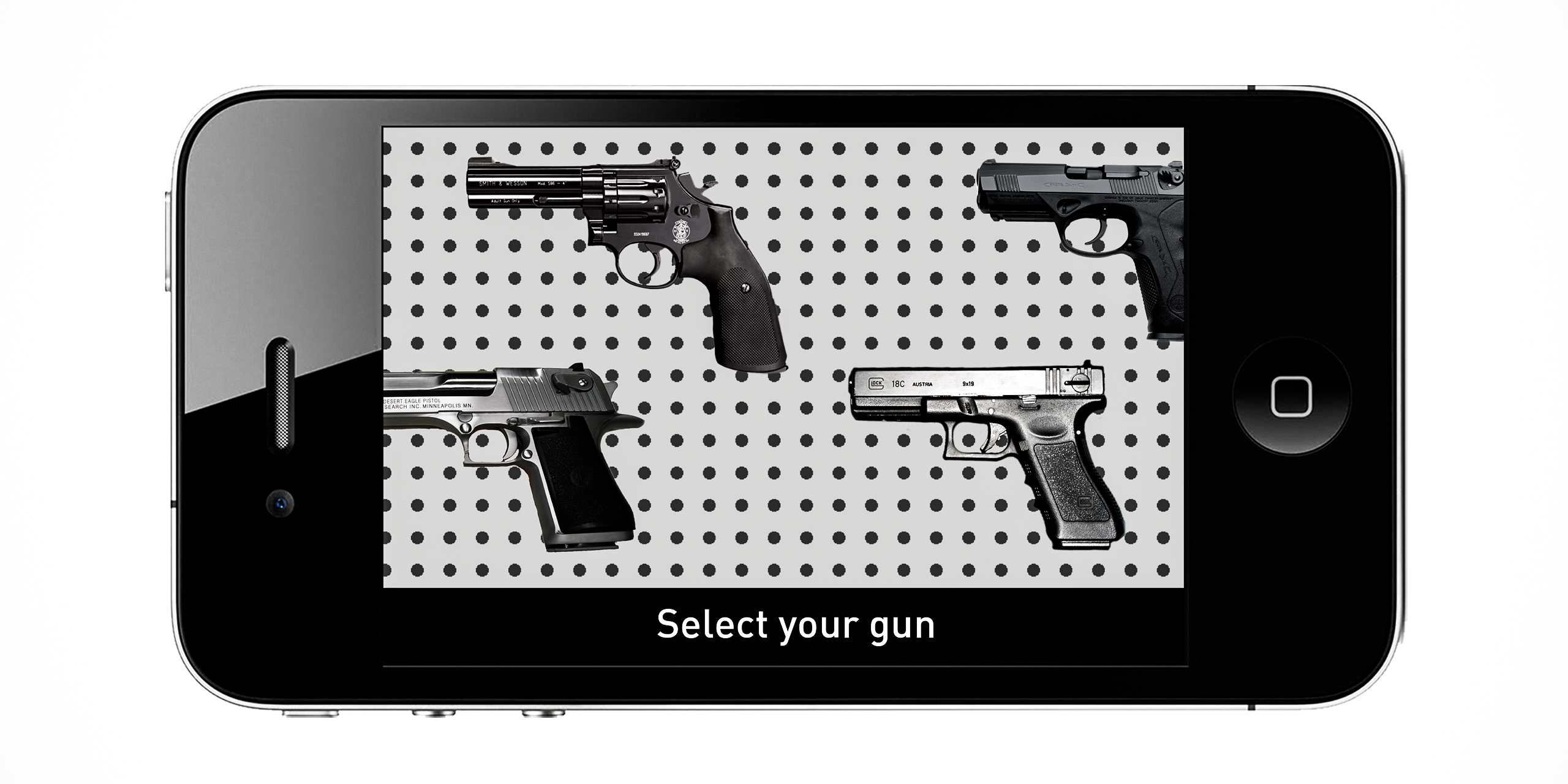
Fall 2011
In this multi-disciplinary studio hosted by Advertising supported by a grant from the Nathan Cummings Foundation, students created a violence and gun prevention campaign designed to serve a diverse population of at-risk youth. This project is a collaboration with the Los Angeles Unified School District (LAUSD) Health Education Programs, HIV/AIDS Prevention Unit.
None of us that undertook this project realized what a big problem we were tackling. Guns are so intertwined in our culture—they’re in our music, movies, television and video games—that it’s very hard to point to an absolute cause.
—Elena Salij, Faculty, Advertising
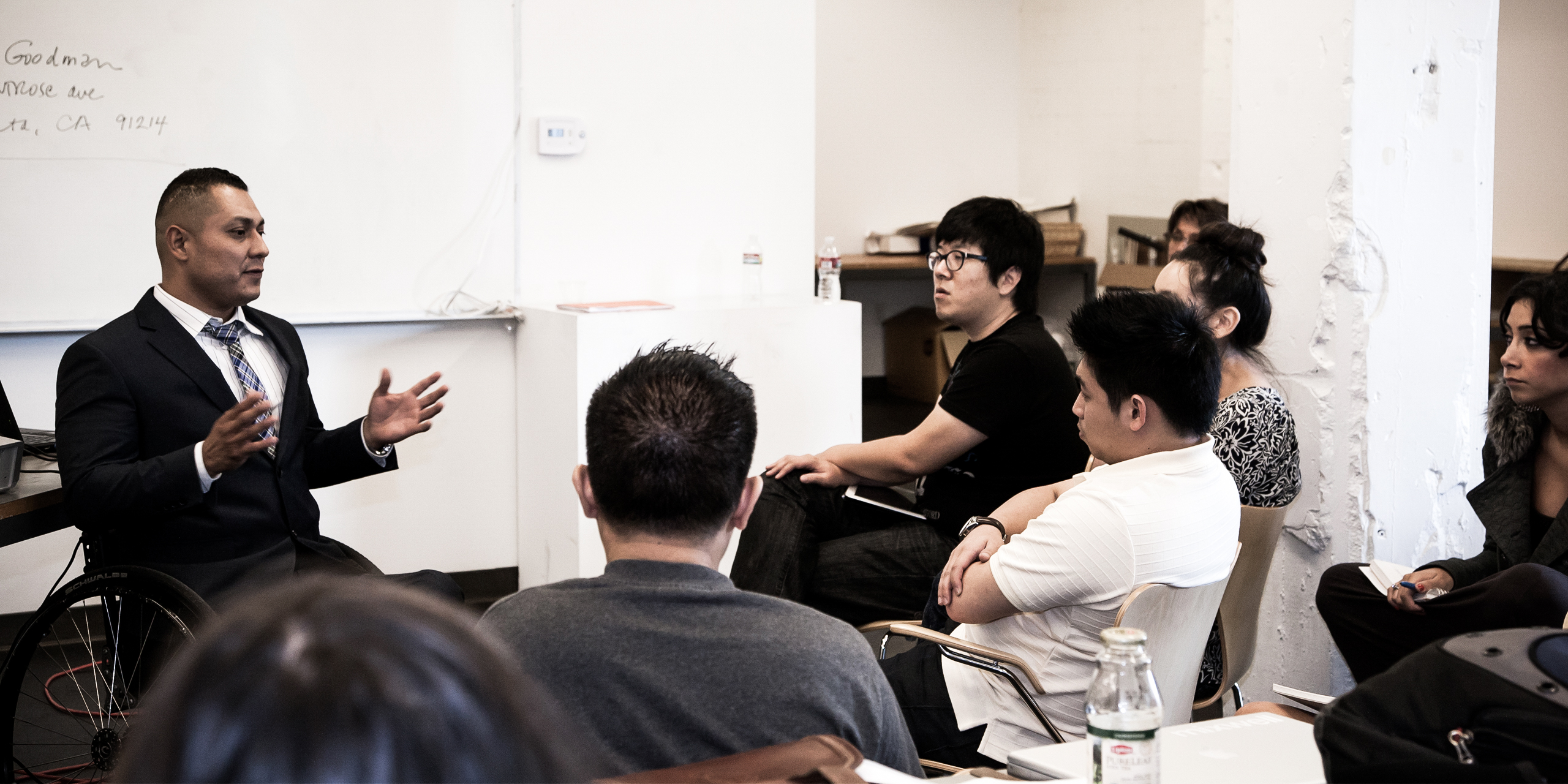
A recent Rand Corporation study indicates that violence is one of our country’s most significant public health issues. Between 20-50% of children in the United States are touched by violence, either as victims or as witnesses. Young people in America grow up embedded in a culture of violence, in particular, gun violence. Movies and television shows present violent crime as routine; popular music glamorizes thug life; video games allow even small children to play at violence with a startling level of realism.
For youth in underserved communities like Northwest Pasadena and South Los Angeles, California, this phenomenon is an affirmative threat. Seduced by a pervasive local gang culture which offers social acceptance and empowerment, youth in underserved socioeconomic neighborhoods can come to believe that a life of gun violence is the most attractive alternative available to them, a perception sealed by a popular culture that normalizes and valorizes this condition. These young people are far more likely to drop out of school, facing foreclosed personal and professional opportunities, prison, and the likelihood that they themselves will be victims of violence. The costs to society are similarly devastating: most homicides and other crimes on persons and property in Los Angeles and Northwest Pasadena are associated with gangs, and the costs of law enforcement, prosecution, and incarceration present an insupportable burden. Ironically, tragically, the annual cost of incarcerating a young person is higher than the cost of sending him or her to a California public college for one year.
In collaboration with LAUSD’s Health Education Programs and HIV/AIDS Prevention Unit which focuses currently on conveying the dangers and long-term impact of gun violence to its roughly 680,000 students, Designmatters developed a violence and gun prevention campaign challenge aimed at serving a diverse population of at-risk youth. The communications created in two design studios address the pessimism and hopelessness that leads teenagers to violence and other anti-social behavior. These campaigns will be implemented in the LAUSD, with replication potential for other underserved areas of the country in 2012 and beyond.
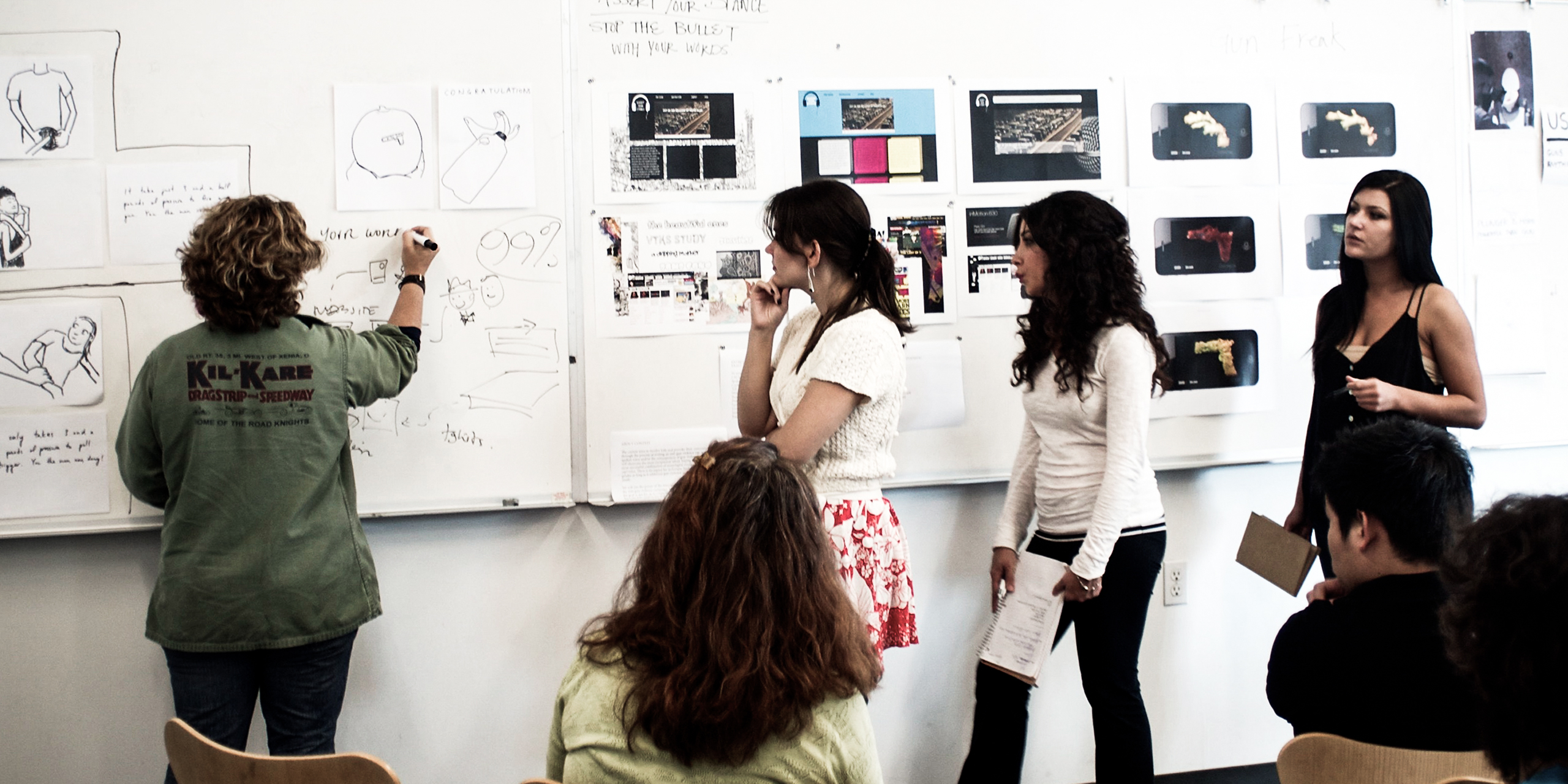
All of these projects are impeccably faithful to the idea that you cannot scare kids and you cannot reason with kids. The same things that attract kids to guns are the same things that can attract them to anti-gun attitudes.
—Elena Salij, Instructor, Advertising
Deanna Hagopian, Maria Lamadrid, Steven Ligatsa and Maia Swift.
Fire Back is a year-long hip-hop music competition that engages middle school students on the topic of gun violence by inviting them to compose anti-gun rap lyrics and to submit them to a contest. The winners will not only have their songs recorded by professional rap artists but will also get a chance to meet their hip-hop heroes in person. The competition will conclude with a live performance.
Middle school-aged kids don’t necessarily think about actual consequences of shooting a gun. We want to provoke those thoughts by giving them a competition. Since teenagers are motivated by prizes, we thought a contest where a famous rapper sings your lyrics would be a great incentive.
—Maia Swift, Team Fire Back
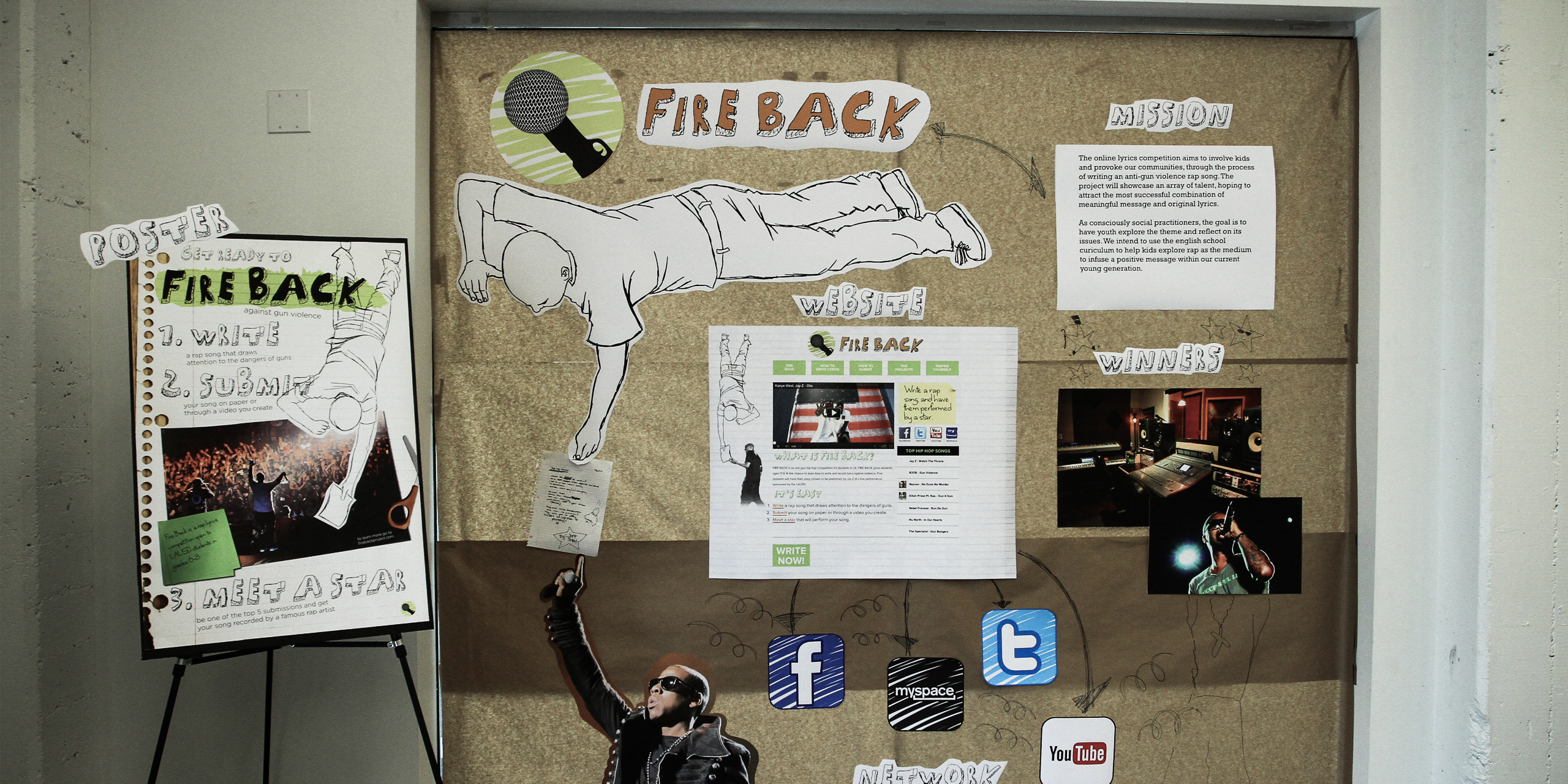
This project uses the power of the Internet to allow students—not the teachers—to create the anti-violence messages. The competition is designed to showcase the most exceptional talent that combines meaningful messages and original hip-hop music. There will be no regard to the entrant’s technique, background, budget or gender so long as the song addresses gun violence and its social consequences.
We’re asking kids to do something they’ve never done before. Imagine that you could meet Jay-Z, will.i.am or Nick Cannon.
—Elena Salij, Faculty, Advertising
Fire Back will utilize a variety of mediums to catalyze and disseminate the student-created anti-gun messages, including: a website that will serve as the hub for the contest and the official entry point for students to upload their entries; social media platforms to encourage a participatory culture around anti-gun messaging; posters, hung in schools and other public spaces, announcing the competition; and a classroom curriculum to help teachers both guide their students through the contest and incorporate the competition into their curriculum.
What’s great about this project is that it bridges literacy with a message about prevention. I could see this fitting into History as well.
—Tim Kordic, Project Advisor, Los Angeles Unified School District
Sang Hyn Chung, Brenton Covington, Bo Yeoung Han and Michelle Tieu.
Real Gun is a smartphone application that surprises kids by demonstrating what reallyhappens when a teen shoots a gun. The application taps into kids’ preexisting interest in downloading realistic gun firingapps by presenting a similar experience that then veers into the real world consequences of shooting a gun.
The kind of kid who is attracted to downloading one of these apps is exactly the kind of kid who needs to hear this message. Real Gun has a kind of jiu-jitsu to it—it uses the power of the enemy against them.
—Elena Salij, Instructor, Advertising
When the user first begins the app, he is presented with a number of guns to choose from. After firing a few rounds, one of several randomly selected scenarios take over the experience. In one scenario the player receives a simulated call from 911 and the phone shows a GPS-enabled map with a police car heading towards the player’s address. Another scenario presents a video call from “Mom,” who either scolds the player (“What in the hell are you up to?”) or kicks him out of the house (“You’re going to hurt someone, and you mean too damn much to me for me to just sit around here and say nothing.”).
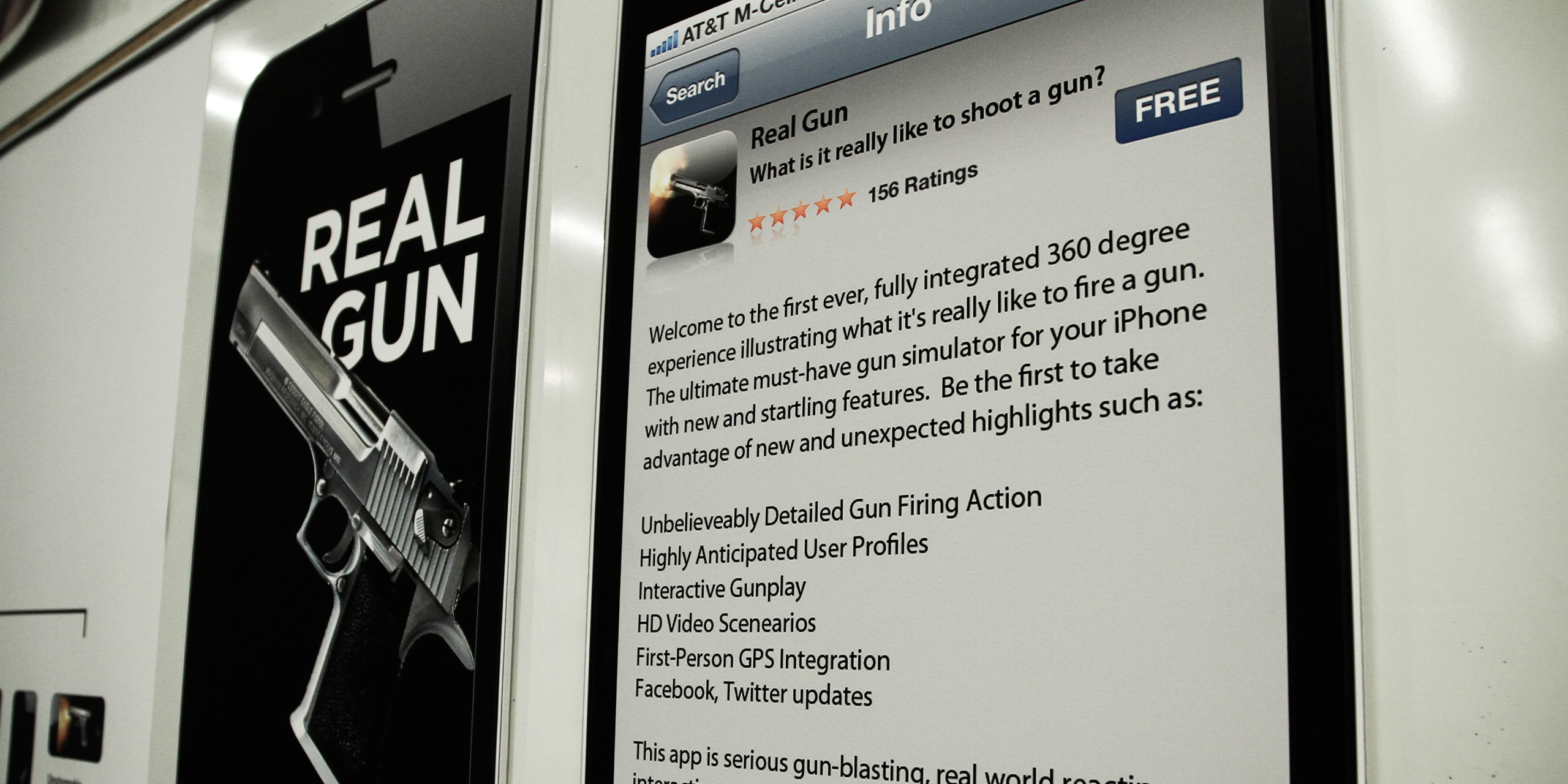
At the midterm, we had four ideas that were promising. Right now we have 11, but we could easily have 40. I see infinite possibilities. And they all happen randomly, so you never know what’s going to happen next.
—Sang Hyun Chung, Team Real Gun
Other scenarios include: “17 Minutes,” which reminds players that an American dies every 17 minutes from gun violence by locking the app for 17 minutes; “In The Prison,” which places the user behind bars and points out that possessing an illegal gun can land you in prison for year; “Gun at School,” which hands the player an expulsion notice, reminding him that schools have zero tolerance policies for bringing guns to school; and “Facebook” in which the player can accidentally shoot their friends on the ubuiquitious social network, with a reminder that 20,000 Americans are injured in gun accidents each year.
Thomas Banuelos, Damon Casarez, Rhombie Sandoval and Alex Cheng.
Where’s Daryl? is a short-term school-wide event designed to alert middle-school students to the hazards of getting involved with guns. The event features Daryl, a fictional middle school student who has gotten into trouble through his involvement with guns. Using various mediums—videos, posters, Facebook—students learn Daryl’s story: how he got involved with guns; his experiences with the juvenile justice system; his regret about his situation; and his resolve to avoid such trouble in the future.
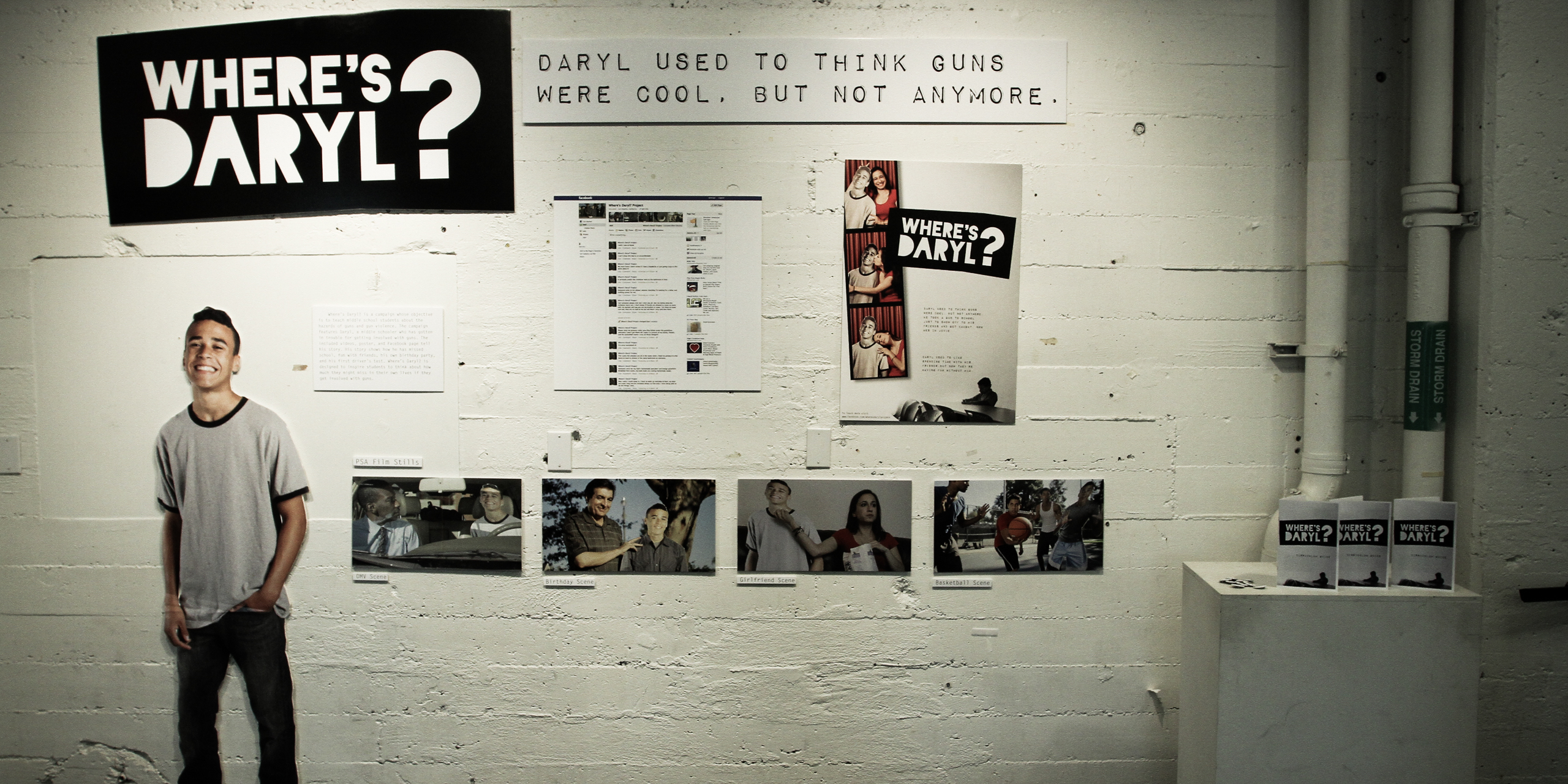
We’re going for totally over-the-top humor as a way of getting kids to watch these videos as entertainment, and then hopefully the message will sink in.
—Thomas Banuelos, Team Where’s Daryl?
Kids giggle when they’re unaware of something or if they’re scared—it’s their way of defending themselves. By creating a comical piece for them to laugh at, you’ve turned the tables on them. But then there’s a serious side to it and that challenges them to have a conversation.
—Tim Kordic, Project Advisor, Los Angeles Unified School District
Where’s Daryl does not present images or stories of gun violence, nor does it focus on statistics about the human cost of gun violence. Research indicates that such representations are too abstract to be absorbed by most pre-teens, and may in fact further romanticize guns and gun violence in the pre-teen mind. Instead, Where’s Daryl? seeks to personalize the risks of guns by inspiring students to consider the impact on their own lives if they get involved with guns as minors.
This is accomplished through: 1) Four short and engaging videos available via YouTube or in-class DVDs, that present important life events that Daryl, represented only by a cardboard cut-out, is missing out on—playing basketball,taking a driver’s permit test,spending time with his girlfriend—because he’s in trouble with the law; 2) Posters, suitable for use in school hallways and in the classroom, that mirror the messaging of the videos; 3) A Facebook page through which Daryl communicates his experience in his own words and which provides links to relevant online resources; and 4) Complementary curriculum materials that invite students to consider the personal costs of being involved with guns through group discussions, bulletin board postings and research and writing assignments.
When you’re talking about guns and gun violence, it’s very tempting to talk about homicides, suicides, accidents, blood and guts. But those kinds of things are really hard for a 13-year-old to absorb. What they can absorb is that they won’t be able to play basketball because they’ll be sitting in a courtroom.
—Elena Salij, Instructor, Advertising
After the studio’s conclusion, Designmatters and project partners from the Los Angeles School District selected the “Where’s Daryl?” campaign for further conceptual development. This phase of the project was developed under the creative direction of Art Center alumna Maria Moon, and was the recipient of a 2012 Sappi Ideas that Matter grant award, recognizing the campaign’s promise for positive change in the community. The Sappi award is enabling a pilot roll-out of the campaign in spring 2013 across several schools in the LAUSD district.
UNCOOL is dedicated to the memory of Norm Schureman, one of ArtCenter’s most beloved teachers and a tragic victim of gun violence.

The Uncool Process Book follows the 2011 Uncool Project through two phases, which culminated in the development of the LAUSD “Where’s Daryl?” Educational Program.
Published by Designmatters
Download PDF